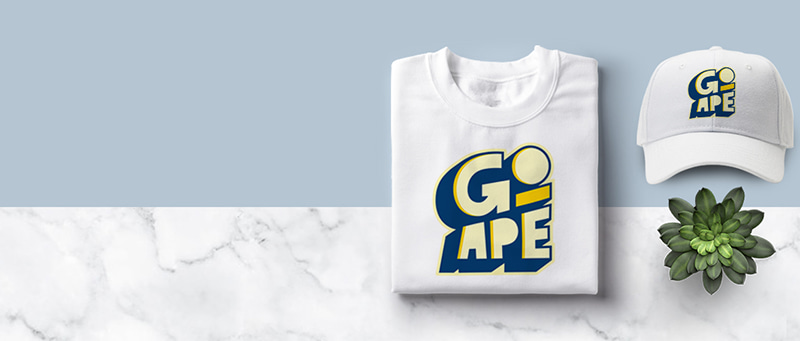Branded Clothing Care: Fabric Types and Washing Tips You Need
Branded Clothing Care: Fabric Types and Washing Tips You Need
Blog Article
Recognizing Clothes: The Relevance of Material Selections in Your Wardrobe
The choice of material in apparel plays an essential function in both aesthetics and capability. Different materials use differing degrees of breathability, durability, and convenience, directly influencing the wearer's experience. Understanding these nuances can enhance one's wardrobe considerably. Yet, lots of overlook exactly how these selections can impact not just personal style, but likewise sustainability. What material decisions could redefine your wardrobe and align it with both style and duty?
The Function of Material in vogue and Performance

Typical Material Types and Their Features
When selecting clothes, understanding the features of typical textile types is necessary for making educated selections. Cotton, a widely-used natural fiber, is recognized for its adaptability, softness, and breathability, making it suitable for casual wear and everyday garments. Linen, one more all-natural alternative, flaunts exceptional moisture-wicking homes and a distinctive structure, ideal for cozy climates.Wool, typically favored for its heat and durability, varies in excellence; merino woollen is soft against the skin, while coarser kinds are utilized for outerwear. Artificial fabrics like polyester and nylon provide sturdiness and resistance to wrinkles, making them preferred for activewear and traveling garments. Blends, which combine synthetic and all-natural fibers, can improve performance while keeping comfort. By identifying these material features, people can choose clothes that aligns with their way of living and visual preferences.
Breathability and Convenience: Selecting the Right Fabrics for Different Climates
Selecting the right textiles for different climates can considerably enhance convenience and overall wearability. Breathable products are important in warm climates, as they allow air blood circulation and dampness evaporation. Fabrics such as cotton, bed linen, and moisture-wicking synthetics efficiently draw sweat far from the body, keeping the wearer cool and dry. On the other hand, in colder environments, thicker fabrics like wool or fleece supply insulation while keeping breathability, making sure warmth without overheating.Additionally, the selection of material weight plays an important role; light-weight materials are more suitable for summer season, whereas heavier alternatives are suited for winter wear. Recognizing the unique residential or commercial properties of each fabric makes it possible for individuals to clothe properly for differing climate condition. Ultimately, picking comfy and breathable fabrics tailored to details climates can greatly improve everyday comfort and boost the overall experience of using clothes.
Toughness and Care: How Fabric Influences Durability of Your Closet
Choosing the appropriate materials can considerably impact the sturdiness and treatment requirements of a wardrobe. Fabrics such as cotton and polyester are known for their durability and simplicity of upkeep, making them optimal for everyday wear. In comparison, fragile materials like silk and shoelace call for even more cautious handling and specialized cleansing methods, which can increase the time and initiative required for care. Branded Clothing.Durability is additionally affected by the fabric's weave and coating; tightly woven textiles often tend to stand up to damage far better than loosely woven alternatives. Additionally, synthetic blends frequently provide boosted sturdiness, combining the most effective high qualities of numerous fibers.Understanding the treatment instructions for every textile is necessary, as incorrect drying out or cleaning can cause premature wear. Inevitably, choosing durable products can cause a longer-lasting closet, minimizing the frequency of replacements and adding to a much more sustainable fashion selection
The Effect of Material on Fit and Shape

Lasting Textile Selections: Making Eco-Friendly Choices
The effect of textile expands past fit and silhouette to include environmental factors, prompting an expanding rate of interest in lasting material options. Green textiles, such as natural cotton, hemp, and Tencel, are getting grip amongst consumers who focus on sustainability in their closets. These products are frequently produced with less chemicals and water, minimizing their ecological footprint.Additionally, recycled materials, made from post-consumer waste, offer a cutting-edge solution to the textile market's pollution problem. Brands significantly welcome transparency in their sourcing methods, allowing consumers to make informed decisions regarding their purchases.Choosing lasting materials not just sustains honest practices but likewise encourages the apparel industry to embrace even more responsible manufacturing methods. As understanding of environmental concerns rises, people are advised to reflect on the lasting effect of their textile options, cultivating a motion towards a more lasting and environmentally mindful strategy to fashion.
Elevating Design: How Textile Can Transform an Outfit
While numerous might concentrate on color and cut when picking an outfit, the choice of textile plays a crucial role in raising design and boosting total appearance. Different materials convey distinctive state of minds and messages; as an example, silk exhibits deluxe and elegance, while denim uses an informal, relaxed vibe. The texture and drape of a material can considerably modify the shape, with structured fabrics offering a sleek look and softer ones producing a more fluid, kicked back aesthetic.Moreover, the weight of the fabric influences wearability across seasons. Light-weight fabrics like linen and cotton are perfect for summertime, while much heavier products such as woollen and velour give heat and sophistication in cooler months. Recognizing textile buildings, such as breathability and stretch, additionally click to read equips individuals to make educated choices that enhance comfort without compromising design. Inevitably, the appropriate fabric can change an outfit from common to amazing, making it a crucial consideration in any wardrobe.
Frequently Asked Inquiries
Exactly how Do I Determine the Textile Web Content of My Garments?
To recognize material web content, one can analyze care tags, conduct burn examinations for fiber identification, or consult textile examples. These techniques help separate materials, guaranteeing informed choices for clothes treatment and maintenance in daily wear.
Can Material Option Affect My State Of Mind or Self-confidence?
Material option can significantly impact an individual's mood and self-confidence. Branded Clothing. Particular materials may stimulate sensations of comfort or style, while others can really feel restrictive or uncomplimentary, eventually influencing self-perception and emotional health throughout the day
What Fabrics Are Finest for Delicate Skin?
For individuals with sensitive skin, natural textiles like linen, bamboo, and cotton are usually advised. These materials are breathable, hypoallergenic, and much less most likely to create irritability, making them appropriate choices for convenience and skin wellness.
How Do I Correctly Laundry and Treatment for Various Fabrics?
To appropriately care and wash for different materials, one should think about each material's particular needs, consisting of temperature setups, cleaning agents, and drying out methods, ensuring long life and maintaining the material's initial qualities for optimal usage.
Are There Details Fabrics for Athletic or Performance Use?
Sports or efficiency wear frequently makes use of materials such as polyester, spandex, and nylon. These materials are created for moisture-wicking, breathability, and flexibility, boosting movement and comfort during physical activities while supplying durability and assistance. Alternatively, in visit this web-site colder climates, thicker fabrics like wool or fleece supply insulation while retaining breathability, making certain warmth without overheating.Additionally, the selection of material weight plays a vital duty; lightweight fabrics are preferable for summer season, whereas much heavier options are suited for winter wear. In contrast, delicate materials like silk and lace call for more cautious handling and specialized cleaning methods, which can increase the time and initiative required for care.Durability is additionally affected by the fabric's weave and coating; firmly woven textiles often tend to stand up to wear and tear much better than freely woven options. In comparison, stiff fabrics can restrict motion but offer a timeless, refined look.Moreover, the thickness and texture of the material can influence the visual perception of body form. The impact of fabric expands beyond fit and silhouette to encompass ecological aspects, triggering a growing navigate to this website passion in sustainable material options. The texture and drape of a textile can dramatically alter the silhouette, with organized materials supplying a polished look and softer ones producing a much more fluid, relaxed aesthetic.Moreover, the weight of the material affects wearability across periods.
Report this page